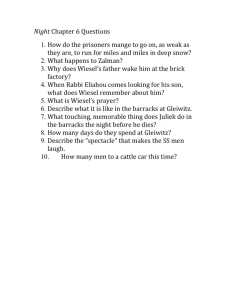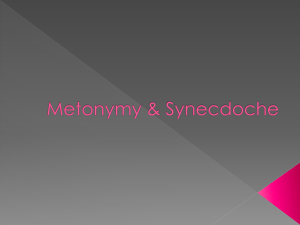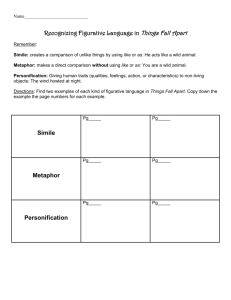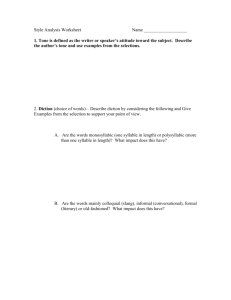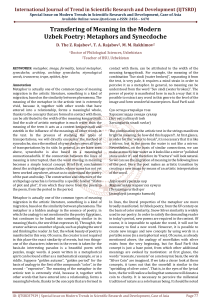Night Literary Devices Chapters 3 & 4
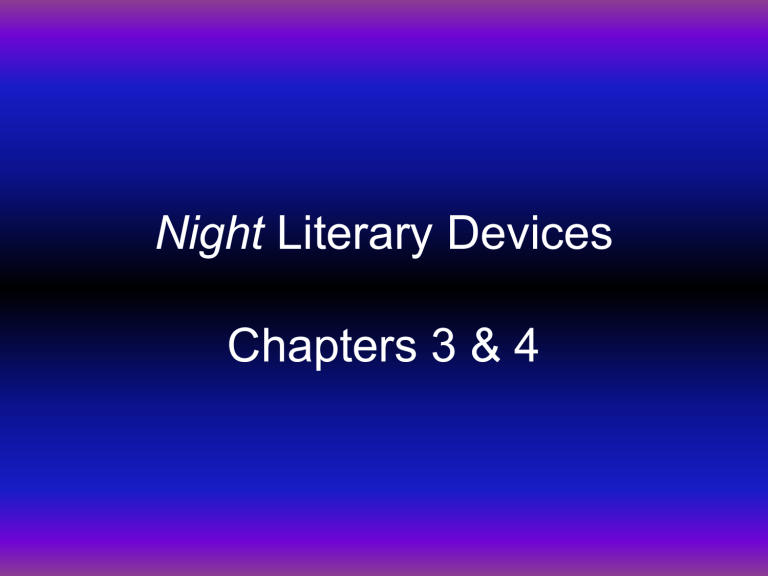
Night Literary Devices
Chapters 3 & 4
Metaphor
• Figure of speech in which one thing is spoken or written about as if it were another; a comparison of two unlike things
• Tenor of the metaphor: the actual subject
• Vehicle of the metaphor: another thing which the tenor is compared to
• Example on page 7: “The race toward death had begun.”
?? - Identify the tenor and vehicle.
Simile
• Comparison using “like” or “as”
• Example: Wiesel describes Moshe as “as awkward as a clown”
• Also has a tenor and vehicle
?? – Identify more similes from the previous chapters.
Synecdoche
• Figure of speech in which the name of part of something is used in place of the name of the whole, or vice versa
• Example: Addressing a representative of the country France as France would be a synecdoche in which a whole (France) is used to refer to a part (one French person)
Synecdoche, continued
• Explain the uses of synecdoche in the following passage:
“Bread, soup – these were my whole life. I was a body. Perhaps less than that even: a starved stomach. The stomach alone was aware of the passage of time.”
?? – What point is Wiesel making with these examples of synecdoche?
Figurative Language
• Writing or speech meant to be understood imaginatively instead of literally
• Example on page 36: Wiesel describes an
SS officer as a man “with crime inscribed upon his brow and in the pupils of his eyes.”
?? – What does this line mean figuratively?
Figurative Language, continued
• Used to help readers see familiar things in new ways
• Wiesel sought to convey unfamiliar things, thing that are horrible beyond words, in a way that readers could imagine, if not understand.
• By using figurative language – by describing the horrors of the concentration camps in images with which readers are familiar – he can, to some degree, express the inexpressible.

